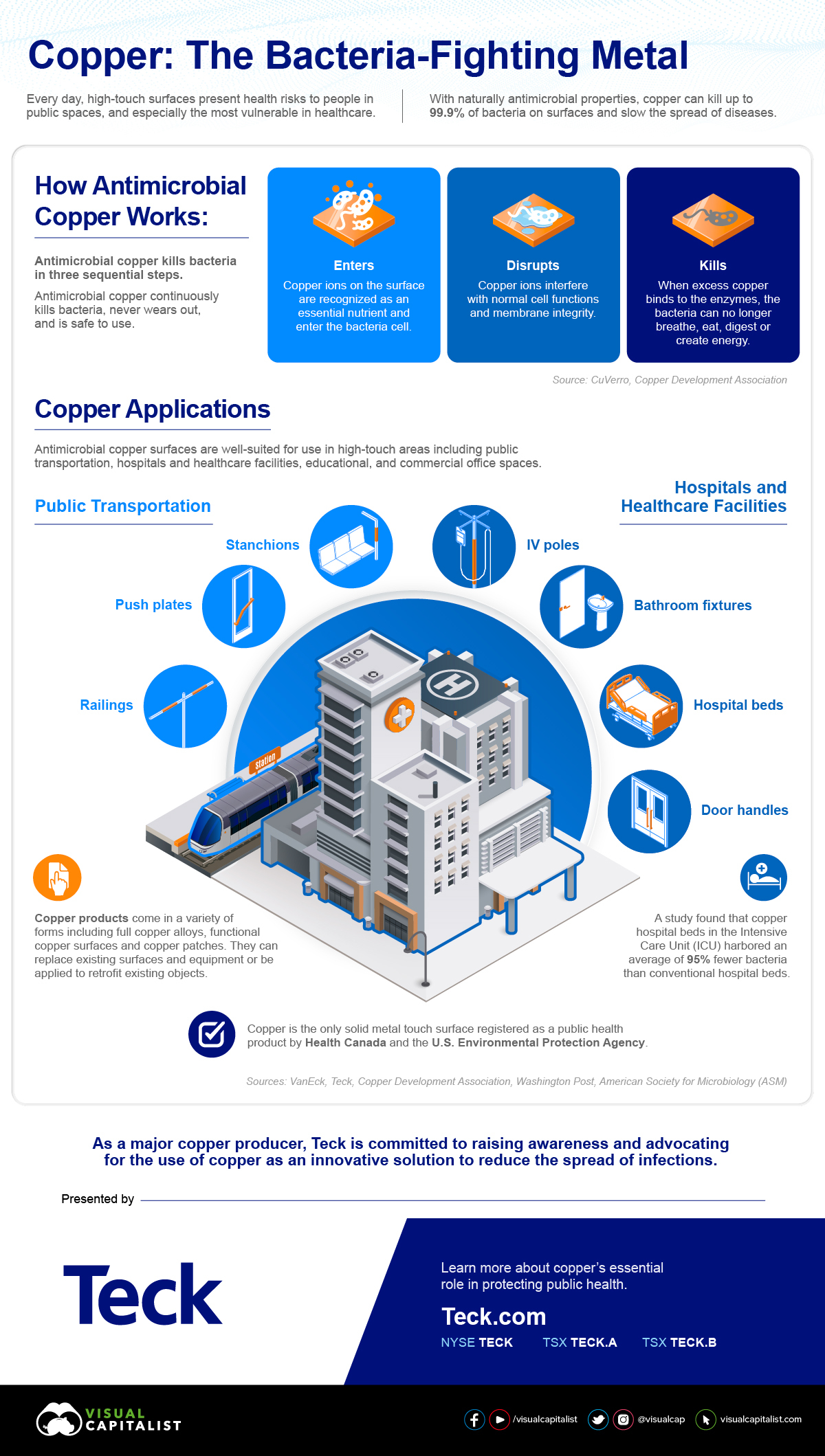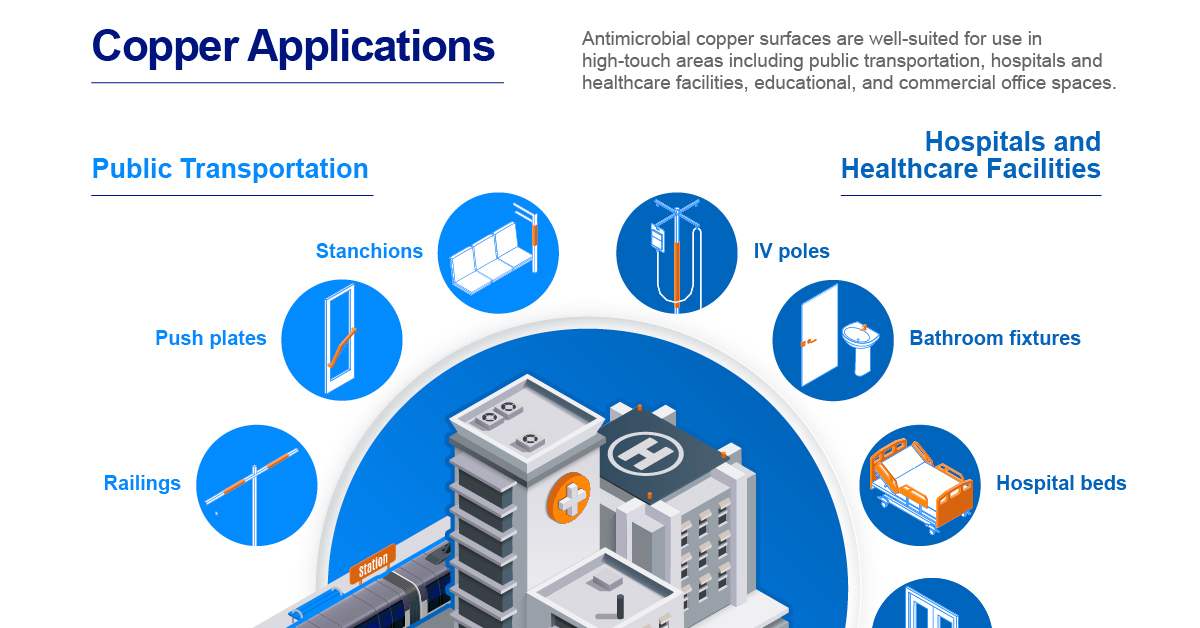Copper’s Essential Role in Protecting Public Health
The following content is sponsored by Teck

Copper’s Essential Role in Protecting Public Health
Every day, high-touch surfaces present health risks to people in public spaces, and especially the most vulnerable in healthcare. In fact, of every 100 hospitalized patients at any given time, seven will get at least one healthcare-acquired or “hospital infection”.
With naturally antimicrobial properties, copper can kill up to 99.9% of bacteria on surfaces within two hours of exposure and slow the spread of diseases.
In this infographic from our sponsor Teck, we explore copper’s bacteria-fighting abilities and its crucial role in public health.
How Copper Kills Bacteria
Due to its powerful antimicrobial properties, copper kills bacteria in sequential steps:
- First, copper ions on the surface are recognized by the bacteria as an essential nutrient and enter cell.
- Then, a lethal dose of copper ions interferes with normal cell functions.
- Finally, the copper binds to the enzymes, impeding the cell from breathing, eating, digesting, or creating energy.
This rapid killing mechanism prevents cells from replicating on copper surfaces and significantly reduces the amount of bacteria living on the surface.
Antimicrobial copper is effective against bacteria that causes common diseases like staph infections and E. coli that causes foodborne illness. The metal continuously kills bacteria and never wears out.
Besides bacteria, researchers are currently studying copper’s impacts on the virus that causes COVID-19. A previous study suggested that SARS-CoV-2 was completely destroyed within four hours on copper surfaces, as compared to 24 hours on cardboard, and up to three days on plastic and stainless steel. Pre-pandemic studies also demonstrated copper’s ability to kill other coronaviruses.
The Applications of Antimicrobial Copper
Institutions around the world have already deployed antimicrobial copper solutions relating to hospitals, fitness centers, mass transit systems, schools, professional sports teams, office buildings, restaurants, and more.
To date, antimicrobial copper has been installed in more than 300 healthcare facilities around the world. Taking the reduced costs of shorter patient stay and treatment into consideration, the payback time for installing copper fittings is only two months, according to an independent study by the University of York’s Health Economics Consortium.
In Canada, Teck has worked with its partners to install antimicrobial copper coatings on high-touch surfaces in hospitals, educational buildings and transit.
The Stanley Cup champions Los Angeles Kings have installed antimicrobial copper surfaces in their strength and training facility in California. Furthermore, over 50 water bottle filling stations made from antimicrobial copper can also be found throughout the Hartsfield-Jackson International Airport in Atlanta.
Copper’s Role in Public Health
While many hospitals and other institutions are already using copper fittings, others are still not aware of its impactful properties.
As awareness increases, copper can become a simple but effective material to help control the spread of infections.
-

 Sponsored3 years ago
Sponsored3 years agoMore Than Precious: Silver’s Role in the New Energy Era (Part 3 of 3)
Long known as a precious metal, silver in solar and EV technologies will redefine its role and importance to a greener economy.
-

 Sponsored7 years ago
Sponsored7 years agoThe History and Evolution of the Video Games Market
Everything from Pong to the rise of mobile gaming and AR/VR. Learn about the $100 billion video games market in this giant infographic.
-

 Sponsored8 years ago
Sponsored8 years agoThe Extraordinary Raw Materials in an iPhone 6s
Over 700 million iPhones have now been sold, but the iPhone would not exist if it were not for the raw materials that make the technology...
-

 Sponsored8 years ago
Sponsored8 years agoThe Industrial Internet, and How It’s Revolutionizing Mining
The convergence of the global industrial sector with big data and the internet of things, or the Industrial Internet, will revolutionize how mining works.


